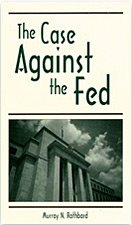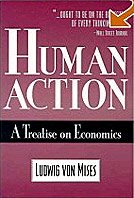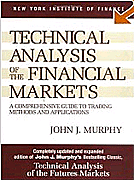Emergency measures loom as Bush hauls out the PPT
Bush Can Buy Time As Property Bubble Bursts
By Ambrose Evans-Pritchard
The Telegraph, London
Monday, January 7, 2008
Bears beware. The New Deal of 2008 is in the works.
The US Treasury is about to shower households with rebate cheques to head off a full-blown slump and save the Bush presidency.
On Friday Mr Bush convened the so-called Plunge Protection Team for its first known meeting in the Oval Office. The black-arts unit -- officially the President's Working Group on Financial Markets -- was created after the 1987 crash.
It appears to have powers to support the markets in a crisis with a host of instruments, mostly through buying futures contracts on the stock indexes (DOW, S&P 500, NASDAQ, and Russell) and key credit levers. And it has the means to fry "short" traders in the hottest of oils.
The team is led by Treasury chief Hank Paulson, ex-Goldman Sachs, a man with a nose for market psychology, and includes Fed chairman Ben Bernanke and the key exchange regulators.
Judging by a well-briefed report in the Washington Post, a mood of deep alarm has taken hold in the upper echelons of the administration. "What everyone's looking at is what is the fastest way to get money out there," said a Bush aide.
Emergency measures are now clearly on the agenda, apparently consisting of a mix of tax cuts for businesses and bungs for consumers. Fiscal action all too appropriate, regrettably.
We face a version of Keynes' "extreme liquidity preference" in the 1930s -- banks are hoarding money, and the main credit arteries of the financial system remain blocked after five months.
"In terms of any stimulus package, we're considering all options," said Mr Bush. This should be interesting to watch. The president is not one for half measures. He has already shown in Iraq and on biofuels that he will pursue policies a l'outrance once he gets the bit between his teeth.
The only question is what the president can manage to push through a Democrat Congress.
The Plunge Protection Team -- long kept secret -- was last mobilised to calm the markets after 9/11. It then went into hibernation during the long boom.
Mr Paulson reactivated it last year, asking the staff to examine "systemic risk posed by hedge funds and derivatives, and the government's ability to respond to a financial crisis", he said.
It seems he failed to spot the immediate threat from mortgage securities and the implosion of the commercial paper market. But never mind.
The White House certainly has grounds for alarm. The global picture is darkening by the day. The Baltic Dry Index has been falling hard for seven weeks, signalling a downturn in bulk shipments. Singapore's economy contracted 3.2 percent in the final quarter of last year, led by a slump in electronics and semiconductors.
The Tokyo bourse kicked off with the worst New Year slide in more than half a century as the Seven Samurai exporters buckled. The Topix is down 24 percent from its peak. If Japan and Singapore are stalling, it is a fair bet that China's efforts to tighten credit are starting to bite. Asia is not going to rescue us. On the contrary.
Keep an eye on Japan, still the world's top creditor by far, with $3 trillion in net foreign assets. The Bank of Japan has been the biggest single source of liquidity for the global asset boom over the last five years. An army of investors -- Japanese insurers, pension funds, housewives, and hedge funds borrowing at near zero rates in Tokyo -- have sprayed money across the Antipodes, South Africa, Brazil, Turkey, Iceland, Latvia, the US commercial paper market, and the City of London.
The Japanese are now bringing the money home, as they always do when the cycle turns. The yen has risen 13 percent against the dollar and 12 percent against sterling since the summer. We are witnessing the long-feared unwind of the "carry trade," valued by BNP Paribas in all its forms at $1.4 trillion.
The US data is now relentlessly grim. Unemployment jumped from 4.7 percent to 5 percent -- or 7.7 million -- in December, the biggest one-month rise since the dot-com bust and clear evidence that the housing crunch has spread to the real economy.
"At this point the debate is not about a soft land or hard landing; it is about how hard the hard landing will be," said Nouriel Roubini, professor of economics at New York University.
"Financial losses and defaults are spreading from sub-prime to near-prime and prime mortgages, to commercial real estate loans, to auto loans, credit cards, and student loans, and sharply rising default rates on corporate bonds. A severe systemic financial crisis cannot be ruled out. This will be a much worse recession than the mild ones in 1990-91 and 2001," he said.
Sovereign wealth funds stand ready to rescue banks, as they have already rescued Citigroup and UBS. But as Moody's pointed out this week, the estimated $2,500 billion in lost wealth from the US house price crash is more than the entire net worth of all the sovereign wealth funds in the world.
Add fresh losses as the property bubbles pop in Britain, Ireland, Australia, Spain, Greece, The Netherlands, Scandinavia, and Eastern Europe, as they surely must unless central banks opt for inflation (which would annihilate bonds instead, with equal damage), and you can discount $1,500 billion in further attrition.
Not even a Bush New Deal can hold back the post-bubble tide that is drawing in across the globe. What it can do is buy time. Fortunately for America -- and the world -- the US budget deficit is a healthy 1.2 percent of GDP ($163 billion). Washington has the wherewithal to fund a fiscal blitz.
Britain has no such luxury. Our deficit is 3 percent of GDP at the top of the cycle. Gordon Brown has shut the Keynesian door.
* * *
By Ambrose Evans-Pritchard
The Telegraph, London
Monday, January 7, 2008
Bears beware. The New Deal of 2008 is in the works.
The US Treasury is about to shower households with rebate cheques to head off a full-blown slump and save the Bush presidency.
On Friday Mr Bush convened the so-called Plunge Protection Team for its first known meeting in the Oval Office. The black-arts unit -- officially the President's Working Group on Financial Markets -- was created after the 1987 crash.
It appears to have powers to support the markets in a crisis with a host of instruments, mostly through buying futures contracts on the stock indexes (DOW, S&P 500, NASDAQ, and Russell) and key credit levers. And it has the means to fry "short" traders in the hottest of oils.
The team is led by Treasury chief Hank Paulson, ex-Goldman Sachs, a man with a nose for market psychology, and includes Fed chairman Ben Bernanke and the key exchange regulators.
Judging by a well-briefed report in the Washington Post, a mood of deep alarm has taken hold in the upper echelons of the administration. "What everyone's looking at is what is the fastest way to get money out there," said a Bush aide.
Emergency measures are now clearly on the agenda, apparently consisting of a mix of tax cuts for businesses and bungs for consumers. Fiscal action all too appropriate, regrettably.
We face a version of Keynes' "extreme liquidity preference" in the 1930s -- banks are hoarding money, and the main credit arteries of the financial system remain blocked after five months.
"In terms of any stimulus package, we're considering all options," said Mr Bush. This should be interesting to watch. The president is not one for half measures. He has already shown in Iraq and on biofuels that he will pursue policies a l'outrance once he gets the bit between his teeth.
The only question is what the president can manage to push through a Democrat Congress.
The Plunge Protection Team -- long kept secret -- was last mobilised to calm the markets after 9/11. It then went into hibernation during the long boom.
Mr Paulson reactivated it last year, asking the staff to examine "systemic risk posed by hedge funds and derivatives, and the government's ability to respond to a financial crisis", he said.
It seems he failed to spot the immediate threat from mortgage securities and the implosion of the commercial paper market. But never mind.
The White House certainly has grounds for alarm. The global picture is darkening by the day. The Baltic Dry Index has been falling hard for seven weeks, signalling a downturn in bulk shipments. Singapore's economy contracted 3.2 percent in the final quarter of last year, led by a slump in electronics and semiconductors.
The Tokyo bourse kicked off with the worst New Year slide in more than half a century as the Seven Samurai exporters buckled. The Topix is down 24 percent from its peak. If Japan and Singapore are stalling, it is a fair bet that China's efforts to tighten credit are starting to bite. Asia is not going to rescue us. On the contrary.
Keep an eye on Japan, still the world's top creditor by far, with $3 trillion in net foreign assets. The Bank of Japan has been the biggest single source of liquidity for the global asset boom over the last five years. An army of investors -- Japanese insurers, pension funds, housewives, and hedge funds borrowing at near zero rates in Tokyo -- have sprayed money across the Antipodes, South Africa, Brazil, Turkey, Iceland, Latvia, the US commercial paper market, and the City of London.
The Japanese are now bringing the money home, as they always do when the cycle turns. The yen has risen 13 percent against the dollar and 12 percent against sterling since the summer. We are witnessing the long-feared unwind of the "carry trade," valued by BNP Paribas in all its forms at $1.4 trillion.
The US data is now relentlessly grim. Unemployment jumped from 4.7 percent to 5 percent -- or 7.7 million -- in December, the biggest one-month rise since the dot-com bust and clear evidence that the housing crunch has spread to the real economy.
"At this point the debate is not about a soft land or hard landing; it is about how hard the hard landing will be," said Nouriel Roubini, professor of economics at New York University.
"Financial losses and defaults are spreading from sub-prime to near-prime and prime mortgages, to commercial real estate loans, to auto loans, credit cards, and student loans, and sharply rising default rates on corporate bonds. A severe systemic financial crisis cannot be ruled out. This will be a much worse recession than the mild ones in 1990-91 and 2001," he said.
Sovereign wealth funds stand ready to rescue banks, as they have already rescued Citigroup and UBS. But as Moody's pointed out this week, the estimated $2,500 billion in lost wealth from the US house price crash is more than the entire net worth of all the sovereign wealth funds in the world.
Add fresh losses as the property bubbles pop in Britain, Ireland, Australia, Spain, Greece, The Netherlands, Scandinavia, and Eastern Europe, as they surely must unless central banks opt for inflation (which would annihilate bonds instead, with equal damage), and you can discount $1,500 billion in further attrition.
Not even a Bush New Deal can hold back the post-bubble tide that is drawing in across the globe. What it can do is buy time. Fortunately for America -- and the world -- the US budget deficit is a healthy 1.2 percent of GDP ($163 billion). Washington has the wherewithal to fund a fiscal blitz.
Britain has no such luxury. Our deficit is 3 percent of GDP at the top of the cycle. Gordon Brown has shut the Keynesian door.
* * *
Labels: Ambrose Evans Pritchard, fiat money, financial crisis, market manipulation















![[Most Recent Quotes from www.kitco.com] [Most Recent Quotes from www.kitco.com]](http://www.kitco.com/images/live/t24_au_en_usoz_6.gif)
![[Most Recent Quotes from www.kitco.com] [Most Recent Quotes from www.kitco.com]](http://www.kitco.com/images/live/au_go_0030_ny.gif)
![[Most Recent Quotes from www.kitco.com] [Most Recent Quotes from www.kitco.com]](http://www.kitco.com/images/live/au_go_0365_ny.gif)
![[Most Recent Quotes from www.kitco.com] [Most Recent Quotes from www.kitco.com]](http://kitconet.com/charts/metals/silver/t24_ag_en_usoz_4.gif)

















0 ΣΧΟΛΙΑ (COMMENTS):
Post a Comment
<< Home